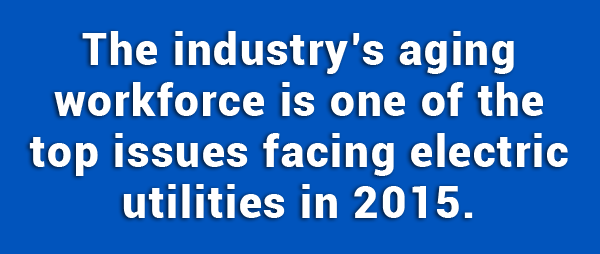
Health
A key public health strategy for those 50 or older is to take advantage of preventative services. Despite their effectiveness, only 25 to 50 percent of seniors are up-to-date. The services are at least partially covered by Medicaid, Medicare, and most insurance plans.
The delivery of preventative services needs to be increased in community settings. A promising strategy to close the gap between recommended and actual use of services is to expand delivery sites beyond clinical settings. Clinical care and community integration of a core set of services that yield the most benefit for the dollar and are widely advantageous for the general population should be developed.
Increased physical activity is associated with lower health costs. The savings justify active intervention to increase physical activity for seniors. Read the study information presented on this website.
Here are some links that discuss benefits of physical activity:
Medicine
Thirty-eight percent of adults surveyed reported the use of complementary and alternative medicine. People between the ages of 50 and 59 made up the largest sector. Forty-two percent who used CAM told an osteopathic physician or an M.D. about using them?
When using conventional medical approaches, prescription drugs, or over-the-counter medications to manage health, patient/health care provider communication is vital. Practices and products considered CAM include acupuncture, chiropractic care, meditation, and dietary and herbal supplements.
The universal caution to ask your doctor about an exercise program is not viewed to be as necessary as having a discussion about CAM. The caution paints a picture that exercise is potentially harmful. Insisting on extensive screening before exercising is inappropriate and unrealistic for older adults. An abstract of an article published in the American Journal of Preventative Medicine on physical activity for older adults can be found on this link. Related information on the website includes:

Lifestyle
Unhealthy behaviors such as drug abuse, excessive alcohol consumption, and smoking, as well as poor diet and inactivity, raise the risk of costly and debilitating health problems. The behaviors are responsible for nearly 40 percent of US deaths. Social and behavioral science research is important. The National Institute of Health sees opportunities to apply what has been learned in helping people change behaviors and improve their well-being and health.
Nearly a third of adults in the US are obese. Obesity raises the risk of negative health conditions such as osteoarthritis, some cancers, type 2 diabetes, and heart disease. Aging Blueprint provides advice and tips on these conditions. They include ways to eat better, lifestyle habits that prevent cancer, and fundamental need of physical activity to prevent disease.
Age-Related Changes
Stereotypes of aging are frequently inaccurate. Most older Americans maintain close relationships with friends and family and live independently. Their personalities remain relatively stable. Depression is not as prevalent in seniors as it is in younger adults.
There are typical age-related changes that affect lifestyle. Osteoporosis, diabetes, heart disease, hypertension, and arthritis have an increasing probability of occurring as people age. The ability to code, store, and receive information decreases. Some older Americans experience memory loss.
Cognitive changes associated with mental processes such as perception and sensation, language, problem-solving, and thought occur among the aging. There is a greater need for things to be repeated. Inputting and retrieving information may take longer, but social and occupational functioning is not impaired.
The long-term memory may substantially change while short-term memory shows fewer declines. Most language aspects remain strong, word-finding declines as does three-dimensional drawing. Creativity and wisdom remain. Mental disorders are less likely than any other age group. Life satisfaction is good, if not better than in younger people.
youtube: self-esteem
Karma Video
Maslow Hierarchy of Needs Video
youtube: being more confident
youtube: loving yourself
youtube: affirmations
youtube: procrastination
youtube: girlfriend
youtube: gratitude
youtube: positive thoughts
youtube: subconscious mind
youtube: stop worry
youtube: finding your passion
youtube: spiritual enlightenment
youtube: confidence
youtube: developing self discipline
youtube: law of attraction
youtube: success
youtube: the secret
youtube: coping with depression
youtube: relationship advice
youtube: how to have amazing sex
youtube: communication
Stop Being Workaholic
How To Meditate Deeper
How To Study For School
Leadership
Spiritual Enlightenment
The Difference between Gerontology and Geriatrics
Gerontology is the study of aging and its related problems. Geriatrics focuses strictly on diseases and medical conditions of the aging. Sociology, psychology, and biology are all incorporated in gerontology. Multi-facets of aging are studied. Gerontology professionals are found in business communities, nonprofits, government, and healthcare.
Significant challenges face the aging population. Challenges include continuing employment, health and wellness maintenance, and managing finances. Americans are living longer and facing challenging economic times.
Many are finding it necessary to work beyond normal retirement age. A prediction was made that the years from 2010 to 2020 will see an 80 percent increase in people working past the age of 65. The last decade has brought dramatic changes in the aging population’s wellness and health needs. The growing aging population has created a need for health care workers, financial planners, counselors, and qualified occupational therapists. Gerontologists deal with government policy, physiology of aging, research methods, geriatric psychology, social services, housing, ethics, and theories of aging.
Below is information offered by Aging Blueprint:
- Government Policy
- Physiology of Aging This link encompasses many of the issues mentioned above.
- Social Services

The older worker population has significant implications for the healthcare and other industries. The industries employ an older workforce and provide services to an increasing number of aging patients. Strategies are being explored to retain older professionals. Those with age-related disabilities are included in the exploration.
By the year 2050, the US Census has predicted 19 percent of the US workforce will be workers who are 65 or older. The percentage is a 75 percent increase while the percent of 25 to 54 year-olds is expected to grow only two percent. These trends present significant employment challenges.
Healthcare is affected more than any other industry. The growing aging population and the number covered by the Affordable Care Act mean employers must keep an adequate number of workers and meet the increased demand for healthcare services. Healthcare employers have to reevaluate their current practices and policies so as to retain talented staff and create job opportunities for all ages. This link provides some information about the geriatric healthcare workforce.
